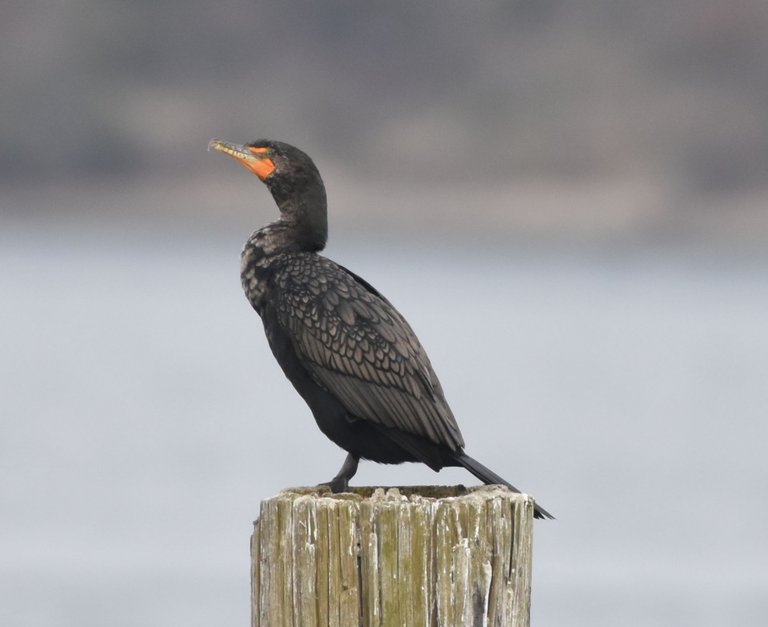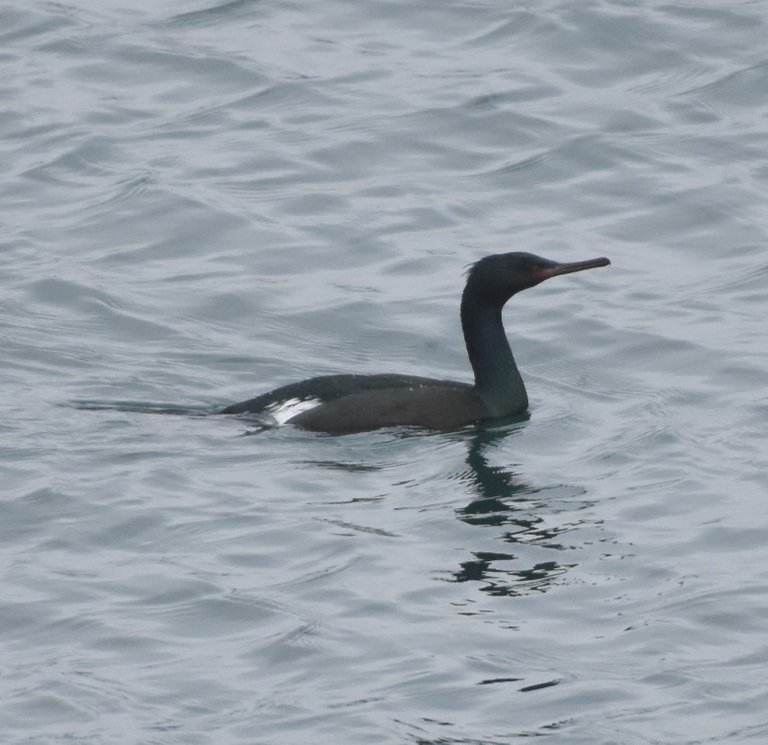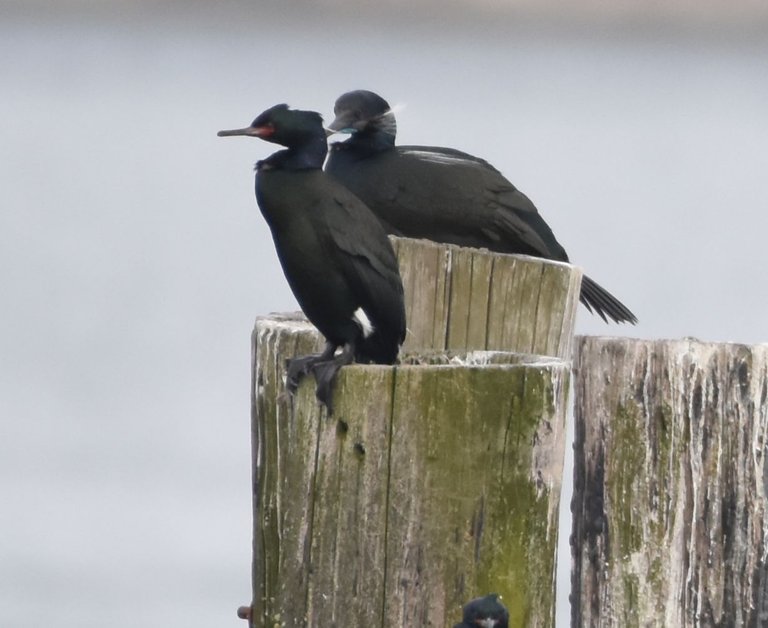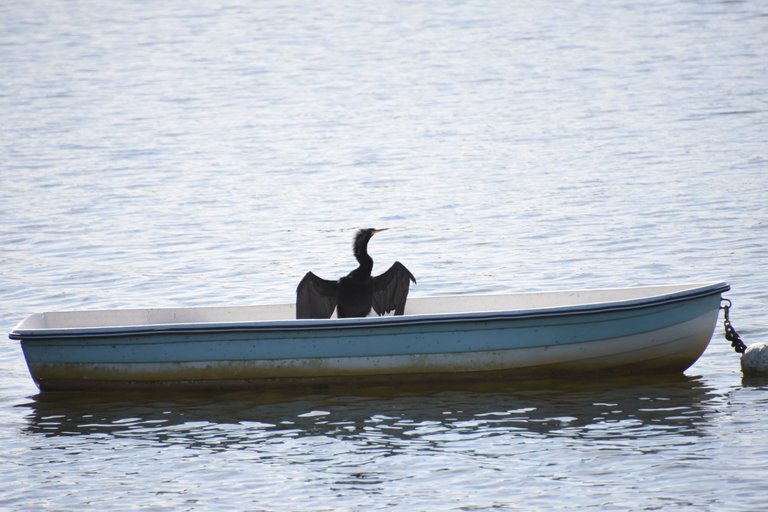Titlow Beach is probably the best place in Tacoma, WA to study cormorants. Almost all winter and spring all three of the species of cormorants that occur in Washington can be seen at close range together. This is a photo of two of the species in their breeding plumage. The birds with the white flank patches and reddish faces and smaller heads and bills are Pelagic Cormorants Urile pelagicus. They are definately misnamed because they are the least likely of the three species of cormorants seen here to be found far at sea. The bird on the left and the top bird in the middle, with whitish plumes on the face and back, with a somewhat larger bill and if you look closely a fabulously blue throat patch (gular patch) are Brandt's Cormorants Urile penicillatus. They do not breed in our area, but move north to here to feed and spend the winter in our nutrient rich waters. These two species are found only on salt water.
Double-crested Cormorant Nannopterum auritum is our year-around breeding cormorant. It is found on both salt and fresh water, is slightly larger, has a larger head, has a bright yellow gular pouch, and flys with its neck crooked.
Double-crested Cormorant in flight.
Usually it is fairly easy to identify a Pelagic Cormorant either in flight or perched, because of their small head that is about the same thickness as their neck.
Pelagic Cormorant, note the small head, red facial patch and white flank patch. In breeding plumage, seen from about February to May, the white flank patch maked ID especially easy.
Brandt's Cormorant is the toughest of the three to identify. Often the ID is made by exclusion, because the head is too big for a Pelagic Cormorant and it lacks the yellow gular patch or crooked neck of a Double-crested Cormorant.
Still, sometimes an identification to species level is difficult, and we sometimes on distant or poorly seen birds have to just leave them as a Cormorant species.
Here is a Pelagic Cormorant with the red gular well seen and you get a peek at the blue gular area on the Brandt's Cormorant in in the background.
Cormorants are deep diving birds, and can get to depth because their feathers do not repel water, so they need to dry their feathers before efficient flight is possible. It is common to see a cormorant perched with it's wings held out to dry the feathers. I cannot find a good photo of a cormorant in this pose, so here is an Anhinga to give you an idea of how it looks.
Anhinga Anhinga anhinga is another species that needs to dry its feathers for flight after diving to catch fish.
Keep on birding. Good day!





